The Best Methods For Introducing Formula to Breastfed Babies
42 hours of research 4 minute read

Transitioning from breast milk to formula milk can be tricky for new parents. When introducing formula milk for the first time, it is essential to gradually reduce breastfeeding frequency and replace it with bottle feeding. This allows the baby to get used to the change and the mother to avoid leaky and sore breasts. In addition, the gradual shift from breastfeeding to formula milk can also reduce the overall risk of breast infections like Mastitis.
As infant formula is introduced to the baby, the mother’s natural breast milk also starts to diminish due to the decreased feeding frequency. However, to keep the breast milk going at the start, the mother should try to incorporate natural breastfeeding periods and formula milk. The ideal recommended method to do this is by replacing one breastfeeding per day with formula milk.
What Is Formula Milk?
Infant Formula, also known as formula milk, is most commonly based on cow’s milk, which has been processed to make it suitable for newborn infants. There are a number of different formulas available, which may differ based on the milk proteins, vitamin, and mineral content.
The formula milk may be available in different forms, which include powder and ready-to-feed liquid formula. The powdered milk formulas must be incorporated into the pre-measured water to prepare the formula according to the desired viscosity. On the other hand, the ready-to-feed liquid formulas do not need to be prepared and can be given to the infant as it is. However, due to the ease of use, the liquid formulas are comparatively more expensive as compared to the powder formulas.
Formula milk is fed to the baby in order to provide them with all the necessary vitamins and minerals critical for growth and development. While there were previously concerns that formula milk’s nutritional value may not match that of breast milk, newer formulas are now trying to match it by adding similar agents.
The common types of formula milk available in the market include cow milk formula, soy-based milk formulas, goat milk formulas, and hypoallergenic formulas.
Cow Milk Formulas
Cow Milk formulas are among the most common formula milk used for healthy infants without allergies. These are based on proteins from cow milk with additional lactose, sugars, and oils. The most popular cow's milk formula is HiPP Dutch.
Soy-Based Milk Formulas
The major difference between the cow-based formula and soy milk-based formula is that this formula contains Soy proteins instead of cow milk proteins. Moreover, the lactose in the cow milk is replaced with sucrose and glucose, which is easier for the infant to absorb. While cow milk is the more popular option, certain conditions require Soy milk to be used instead of cow milk. These include health conditions like Galactosemia, where the baby is unable to absorb the galactose in the milk to glucose. Since Soy milk consists of no galactose, this is favored by infants with this condition. Moreover, infants with other digestive disorders who are not able to break down the complex carbohydrates and require a more hydrolyzed form may also benefit from a soy-based formula. European formulas do not contain soy, and soy-based formulas are more common in the US instead.
Hypoallergenic Formulas
Babies who are allergic to natural milk proteins and cannot break them down into simpler forms in the digestive tract may benefit from a hypoallergenic formula. The hypoallergenic milk formulas contain hydrolyzed protein molecules, which put less stress on the infant’s digestive tract and are much more easily absorbed into their body. Babies with milk allergies who switch to hypoallergenic formula also find relief in their gassiness, diarrhea, skin rashes, and wheezing symptoms. Moreover, parents who suspect a milk protein allergy in their babies are recommended to consult a healthcare physician for it to be diagnosed and for any other suspected health condition to be ruled out. The most popular hypoallergenic formula is HiPP HA Hypoallergenic.
How To Transition A Baby To Milk Formula
Transitioning from Breast milk to infant formula is not only about the contents and taste of the milk but the method of delivery as well. A baby is used to suckling the breast to attain their milk, and transitioning to the bottle may take some time. This is why the first step is sometimes recommended to start feeding them breast milk through a bottle so that a baby can get familiar with this delivery method.
After completely feeding the baby with breast milk in the bottle for a few days, breast milk should start to be combined with formula milk in increasing proportions. For example, during the first two days, the mother may feed 25% of formula milk and 75% of breast milk. In the following two days, the percentage of formula milk should be increased to 50% while keeping 50% breast milk. Finally the percentage of formula milk should be increased to 75% and 100% over the next four days. This will allow a baby to get used to the taste of the formula milk, and there will be fewer chances of them rejecting it.
Paced Feeding Method
Some experts recommend opting for a paced feeding method, especially during the first days of a baby starting to consume formula milk through a bottle. This helps parents control the flow of milk that is delivered to a baby and reduces their risk of choking. This method includes tilting the bottle downwards to make the nipple face upwards. This will prevent the further flow of formula milk when the baby wants a break. However, when they start sucking again, the nipple can once again be tilted downwards to continue the flow of milk into their mouth.
Partial Weaning
Partial weaning is often recommended as one of the ways to transition from breast milk to formula milk. This uses a combination therapy utilizing both breast and formula milk, where they are given in varying ratios. At the beginning of the weaning process, the breast milk ratio is higher than formula milk. However, as a baby starts to get used to formula, the formula's ratio can be increased over time until it completely replaces breast milk.
Another way this could be done is by alternatively feeding breast milk and formula milk. While formula milk is being given during the day, breast milk can be given during nighttime. This is particularly beneficial for working mothers, who can provide breast milk to the baby when they are with them and arrange formula milk when at work.
Things To Look Out For
While it may seem generally simple to transition a baby from breast milk to formula milk, it is actually a very big change for your baby. Both breast milk and formula milk require unique demands from the baby. In order to breastfeed, the baby learns to open their mouth wide and suck on their mother’s breast. It is up to the baby when they want to suck to receive milk and when they want to take a break for a breath - giving them more control.
On the other hand, bottle feeding is a completely new mechanism for them as it provides a continuous supply of milk and the control is completely in the hands of the person feeding them. Even though this change may be tricky for the baby in the beginning, once they get used to the bottled milk, they will develop a strong preference for them.
Moreover, sometimes switching from breast milk to bottled formula milk can lead to nipple confusion in the baby, where they start to have trouble latching on to the breast. This may be a source of stress for the new mother, but the change in the sucking pattern is the baby trying to get used to the new way of feeding.
Amount And Frequency Of Feeding
A common question a lot of new mothers have is about the quantity and frequency of formula milk to be fed to the baby. Similar to breast milk, the bottle style in which formula milk is delivered can also be dependent on the baby’s unique feeding demand. As the baby continues to grow, there is a change in their nutritional need as well. Moreover, every milk formula is slightly different from one another, which is why after consultation with a pediatrician, parents also refer to the instruction given by the manufacturer about the way to prepare the formula and the frequency with which it should be given. This is also true for feeding schedules, as it may vary from baby to baby and parent to parent.
Top Recommended Formulas For Transitioning Breastfed Babies
1. HiPP Dutch
✓ Age: 0-6 months
✓ Contains Probiotics & Prebiotics
✓ No sugar, no corn syrup, no soy
✓ No starch
✓ HiPP's most popular formula
Check PriceHipp Dutch is among the most popular formula milk for transitioning breastfeeding babies. It is rich in prebiotics, prebiotics and DHA required to ensure healthy development. It is also free from added sugars and soy.
✓ Age: 0-6 months
✓ No palm oil
✓ Contains natural whey, DHA, & ALA
✓ Demeter certified (Organic++)
Check PriceHolle Goat Dutch is a goat milk-based formula that is ideal for babies who are at risk for cow milk allergies. It is rich in Vitamin A, Vitamin D, and Calcium and is easier to digest.
3. Holle Cow
✓ Clean formula ingredients
✓ Demeter biodynamic certified
✓ Contains natural whey, DHA, & ALA
✓ Holle's most popular cow formula
Check PriceHolle Cow is composed of 99% organic constituents, while the remaining 1% is composed of essential vitamins and minerals required by the growing baby. It is also free from GMOs, preservatives, added sugars, steroids, and hormones.
Introducing formula to breastfed baby
Transitioning from breast milk to formula milk is not only about transitioning from one form of milk to another but also about how it is delivered to the baby. For example, most mothers choose to feed breast milk to their babies directly through the breast, while formula milk must be prepared into a bottle and fed to the baby. This is why the transition from breast milk to formula milk should not be done in a hurry; instead, it should be conducted over time, allowing the baby to get used to it before completely making the switch.
In addition to taking the transition slowly, it’s crucial to pay attention to your baby’s cues and preferences. Some babies may take to formula easily, while others might need more time to adjust. Be patient and flexible, and consider trying different types of formula if needed, as each baby has unique tastes and tolerances. Remember, every baby is different, and what works for one might not work for another.
Aside from the methods discussed in this blog, consulting your pediatrician is an excellent way to gain personalized advice on how to introduce formula to a breastfed baby. Your pediatrician can offer insights tailored to your baby's unique needs and any specific health considerations. This professional guidance can help ensure a smooth and healthy transition, making the experience as comfortable as possible for both you and your baby.
Most Popular Formulas For Breastfed Babies
Organic Life Start is committed to providing accurate, reliable, and trustworthy information to parents and caregivers. We carefully choose credible sources and follow a meticulous fact-checking process to uphold the highest standards in infant nutrition and parenting advice. To learn more about our dedication to accuracy, please explore our editorial guidelines.
Link To Sources
- https://norasnursery.com/blogs/how-to/the-12-month-sleep-milestone-encouraging-independent-sleep
- https://kidshealth.org/en/parents/breast-bottle-feeding.html
- https://www.nhs.uk/start-for-life/baby/feeding-your-baby/mixed-feeding/introducing-formula-feeds/
- https://www.whattoexpect.com/first-year/feeding-baby/things-to-know-about-breastfeeding-and-formula-for-baby/


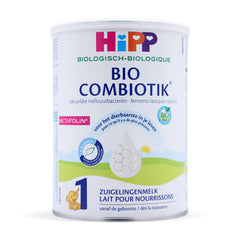
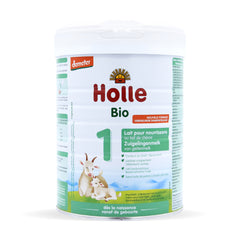
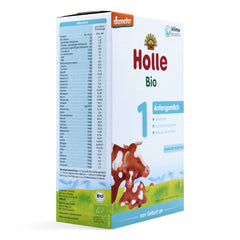
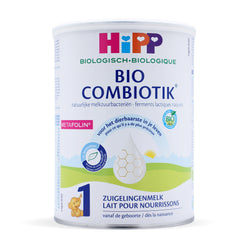

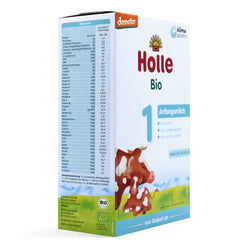






Trisha C -
This really brings me back to when my baby and I were starting the transition from breastfeeding to formula. I remember feeling nervous at first, because the bottle was so different from what my baby was used to. We took it slowly, just like this blog suggests, and started by offering a small bottle once a day. Some days went smoothly, and other days my baby wasn’t having it at all, and that was okay. Giving both of us time to adjust made a huge difference and helped avoid a lot of stress. I also learned that patience mattered more than doing everything “perfectly.” In the end, easing into the change helped my baby feel comfortable and helped me feel more confident as a mom.
Dominique C -
December 26, 2025
One trick that worked for me was mixing a small amount of formula with breast milk at first. I started with just a little formula in each bottle and gradually increased it over a week or two. This really helped my baby get used to the taste without getting upset or refusing the bottle. I also paid close attention to her cues—sometimes she wanted more, sometimes less—and adjusted the pace accordingly. Another thing that helped was keeping the feeding routine consistent so she felt secure and familiar with the bottle. Every baby is different, but being patient and flexible made the transition so much smoother for us.
Shane -
December 15, 2025
One trick that really helped us was offering formula during the calmest feed of the day instead of when my baby was already hungry and frustrated. Pairing it with paced bottle feeding made the transition smoother and reduced bottle refusal.